This view of the marshy shore of Port Penn, Delaware looks charmingly bucolic, and it lends itself to imagining the lives of the people who lived and worked in this area at the turn of the 20th century. But looks, in this instance, are terribly deceiving. The landscape and culture that supported the sturgeon fishing industry in Port Penn from the 1830s to the 1950s are largely gone. Environmentally, the shoreline has changed due to dredging and commercial use, and the reedy plants (called phragmite or fragmite) easily visible at low tide were only introduced to the area in the 1930s.[1] Market Street, the town's main thoroughfare, which once proudly led out to a commercial fishing wharf and steamship dock, now dead-ends in a gravelly, grassy lot next to the Cleaver House, a boarded-up historic site. Simply put, Port Penn looks different now.
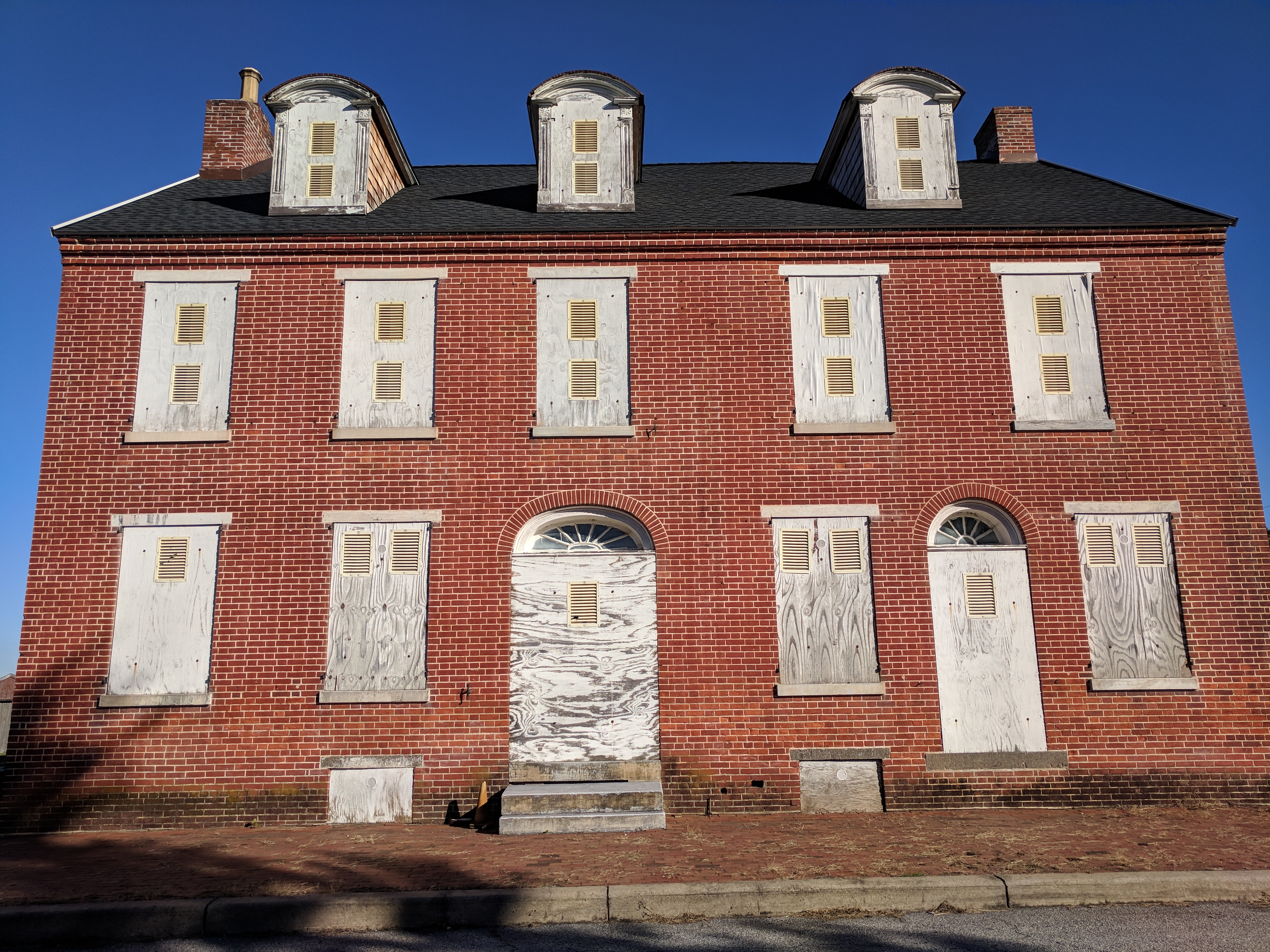
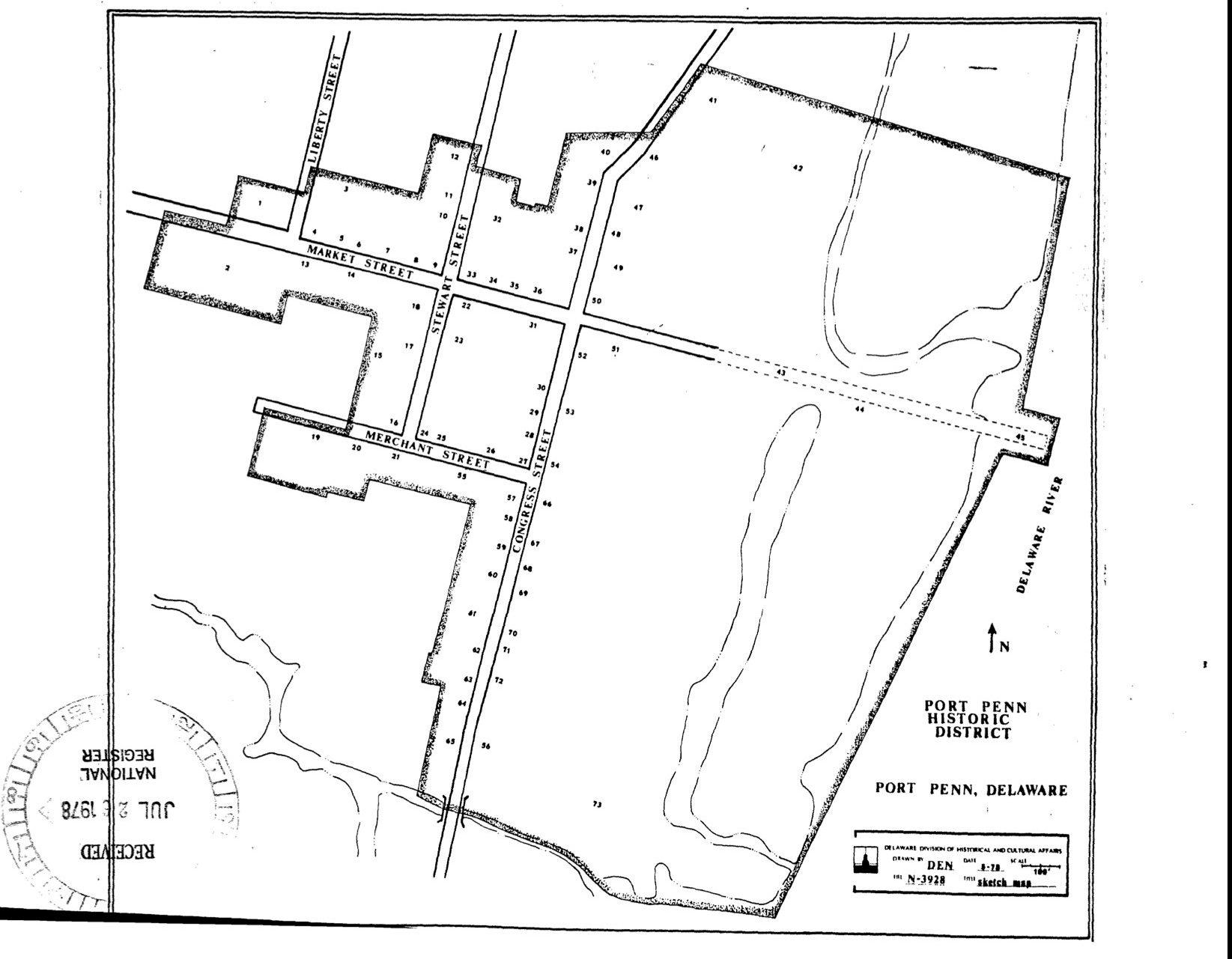
Throughout the 20th century, a slew of changes in the area occurred including noxious pollution of the Delaware River, the construction of the Chesapeake and Delaware Canal, fluctuation in the profitability of the fishing industry, and the endangerment of Atlantic Sturgeon and attendant legislative regulation. Historian Caroline Fisher notes in Marshland Resources in the Delaware Estuary, 1830 to 1950+/-: An Historic Context, "As the function of the river town diverged from that of being centered around life on the water, many of the physical resources associated with a small shipping port and maritime-oriented town began to change in function or disappear [...] These changes significantly altered the appearance of the landscape on which maritime and marshland activities had once been very prominent." [2]
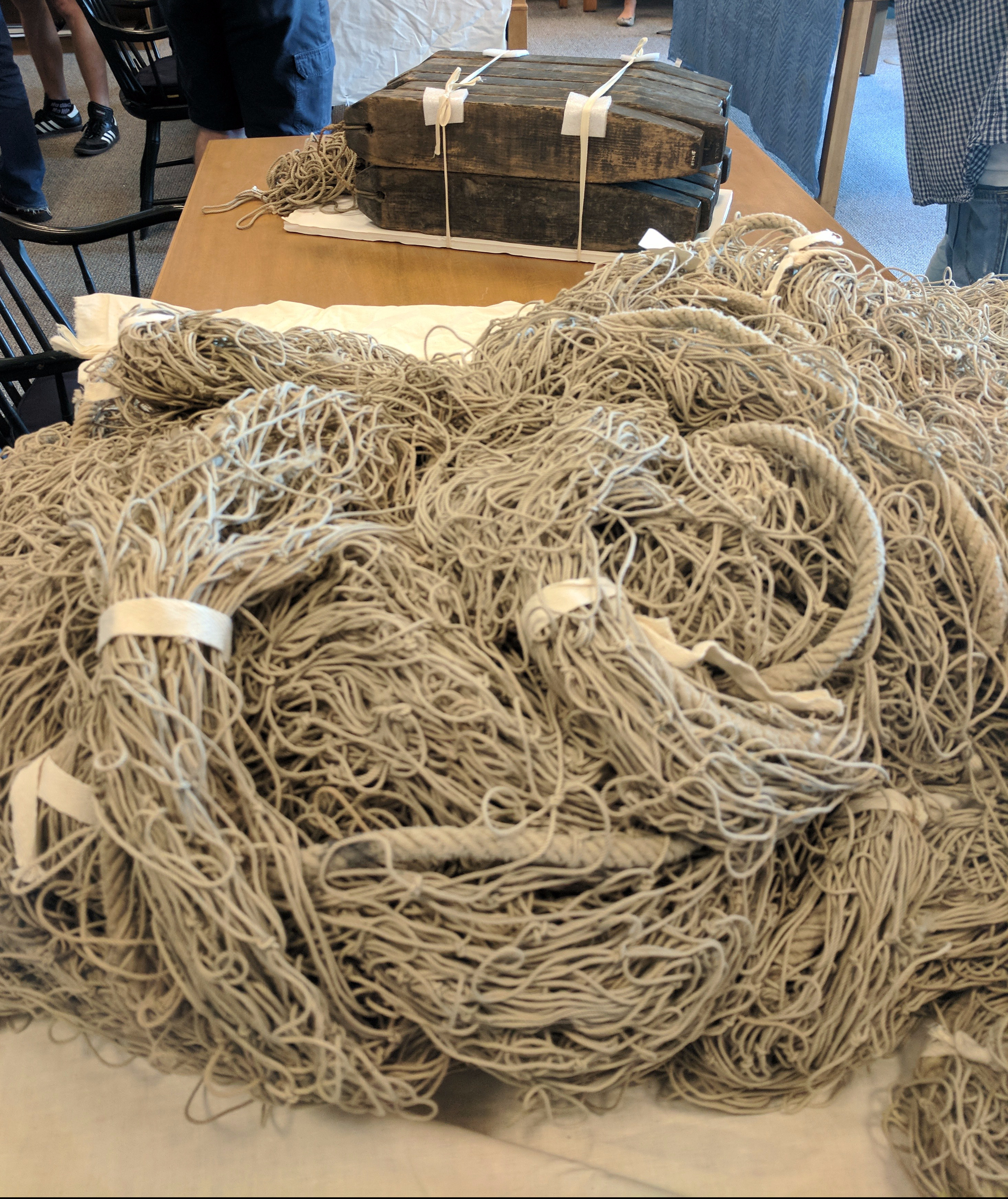
Initially, the Atlantic Sturgeon was cursed as a nuisance to fishermen's nets.[3] European settlers in the area fished for shad, but did not bother with the large, bony, and menacingly prehistoric-looking sturgeon, and commercial fishing did not take off until the 1850s, when it was discovered that the fish's roe could be sold quite profitably as caviar both domestically and internationally.[4] The spawning season would begin in mid-April and continue through the end of the summer, forcing a number of adaptations to fishing equipment, culture, and technique. Fishing Atlantic Sturgeon was still lucrative through the 1920s, but as catch yields waned, so did the commercial fishing industry for sturgeon in the region. The fish is now considered "endangered" by the National Oceanic and Atmospheric Administration.[5]
Gilling skiffs, usually manned by two fishermen, were used to deploy the nets as the tide began to wane.[6] Sturgeon on their way north to spawn would swim in increasingly low water levels until they collided with and became ensnared in the gill net, which had been stretched or drifted at full length across the bottom of the channel. Wooden buoys, called floats or dabs, were strung along the top of the net and attached with rope to indicate the location of a catch.[7] A contemporary writer eloquently described the process:
As soon as a sturgeon butts or strikes the net with his head, or he becomes gilled in the mesh, the entire line of wooden buoys begin to dance; those directly over the gilled sturgeon disappear under the water and thus indicate exactly where to cut-up the net for the sturgeon. A noose is then passed over the tail of the sturgeon and he is hauled into a large flat-bottomed scow, after which he is well clubbed over the head to stop his flopping.[8]
Following the catch, the sturgeon would be dried, cut up, and transported to market. The nets were spread out in the sun to dry and reveal spots in need of repair.

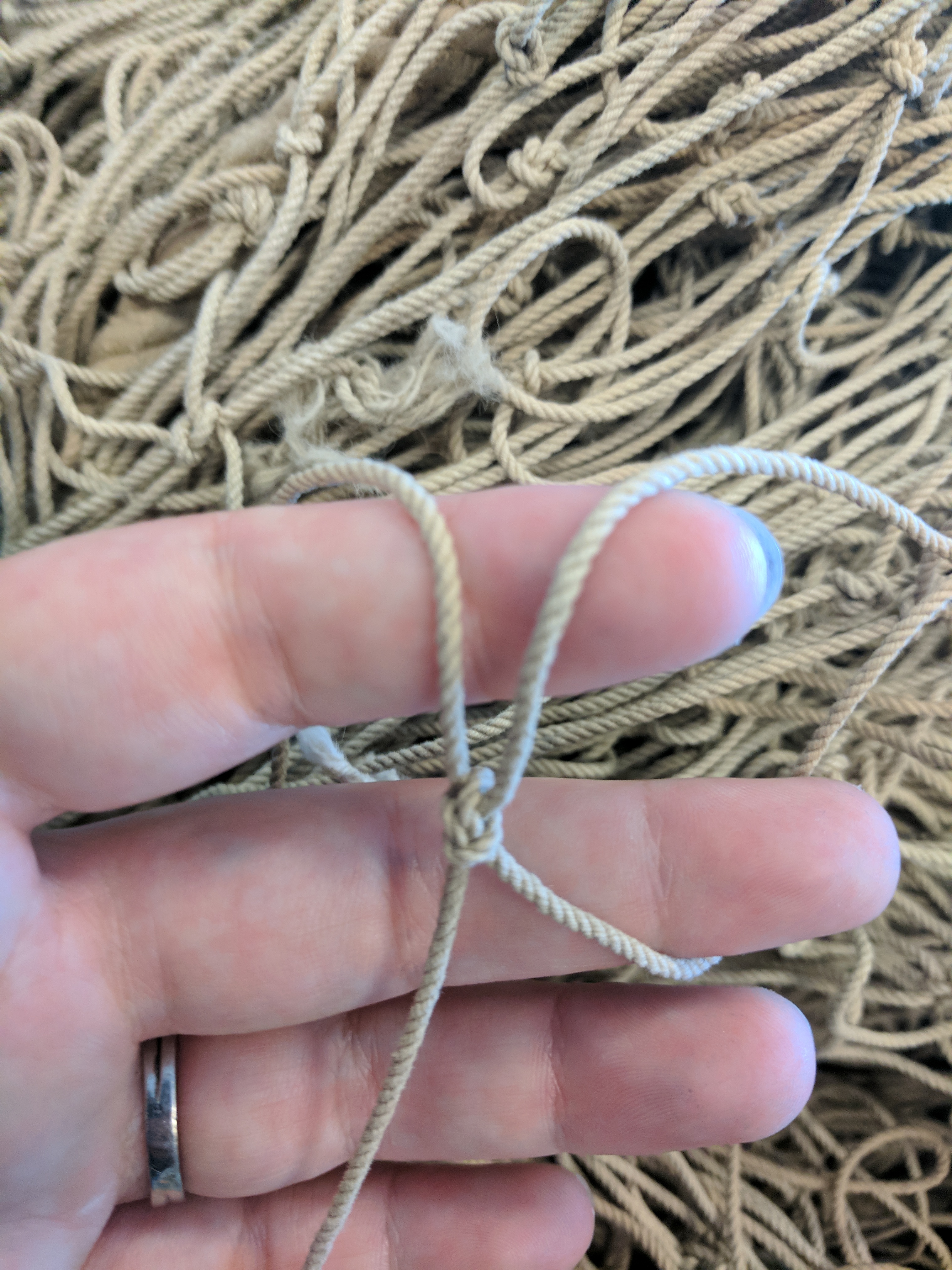
Up until the invention of monofilament fishing wire, the nets were made of heavy cotton twine well tarred and were knit and repaired by fisherman themselves.[9] A wooden gauge helped to ensure that the mesh remained consistently sized during construction; this mesh measured about 16 inches square in the 1880s, but overfishing eliminated many of the largest specimens and so the mesh was reduced to 12 or 13 inches square in order to be able to net smaller sturgeon.[10] The average depth of a gill net was 30 feet, and depending on the width of the channel, the width might extend up to 1500 feet, or 250 fathoms.[11]
Although ISM's accession records indicate that the gill net and floats were created in Port Penn, Delaware sometime around 1910, it is probably not possible to find out who originally owned and used the items. Parsing through the 1910 U.S. Census, I identified 31 residents of Port Penn that gave their profession as "Fisherman," all white men with a basic education. The most dominant family names involved in the local industry were Eaton, Conard, Yearsly, Johnson, and Zackies. But several early 20th century photographs available through the Port Penn Interpretive Center show people of all races and genders engaging in fishing activities, which challenges the conclusion that the self-identified "Fishermen" were the only residents of Port Penn involved in the industry. Caroline Fisher notes this and repeats the speculation of Bob Beck (Port Penn resident, historian, waterman, and donor of the ISM's gill net and floats) that the area's people engaged in multiple seasonal occupations, often alternately farming, hunting, fishing, trapping, and working as a laborer or cannery worker at different points throughout the year.[12] This would explain the very large percentage of residents who identified themselves only as "Laborer." This makes it challenging, if not impossible, to narrow down who might have originally constructed and used the objects.
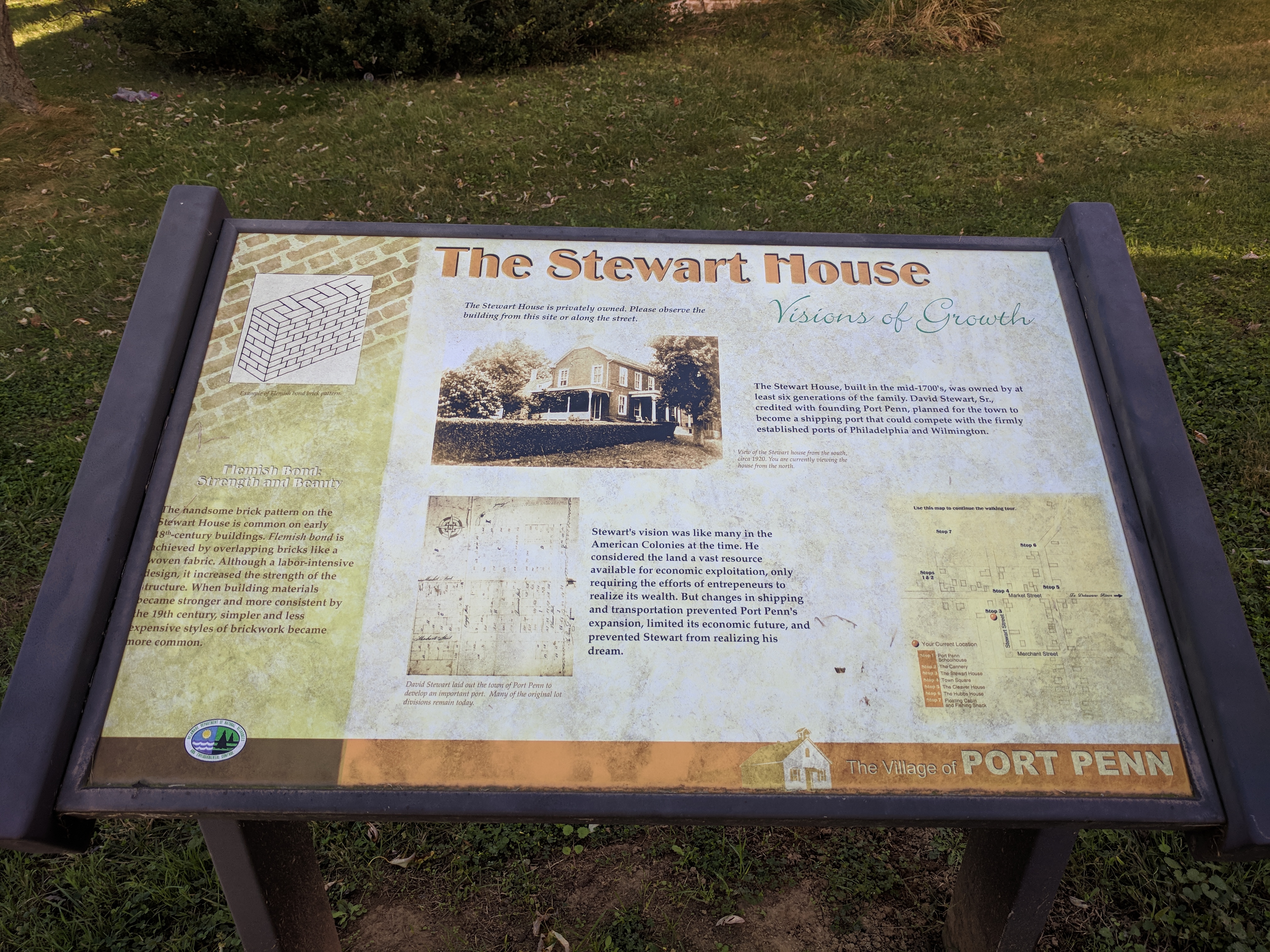
The survival of fragments of Port Penn's historic maritime culture is largely due to the efforts of Bob Beck, who advocated not only for its material preservation, but for the close involvement of regional residents in folklife studies, oral histories, and the creation of the Port Penn Area Historical Society. Although he died in 1993, his influence permeates the village that he devoted so much time and energy to documenting. Port Penn has only four main streets and a handful of historic buildings, but they are all clearly interpreted by signs for visitors that form a short walking tour. As a Historic District, it is formally recognized for its past as a "river town," which inspired a distinctive culture deeply tied to its physical environment.
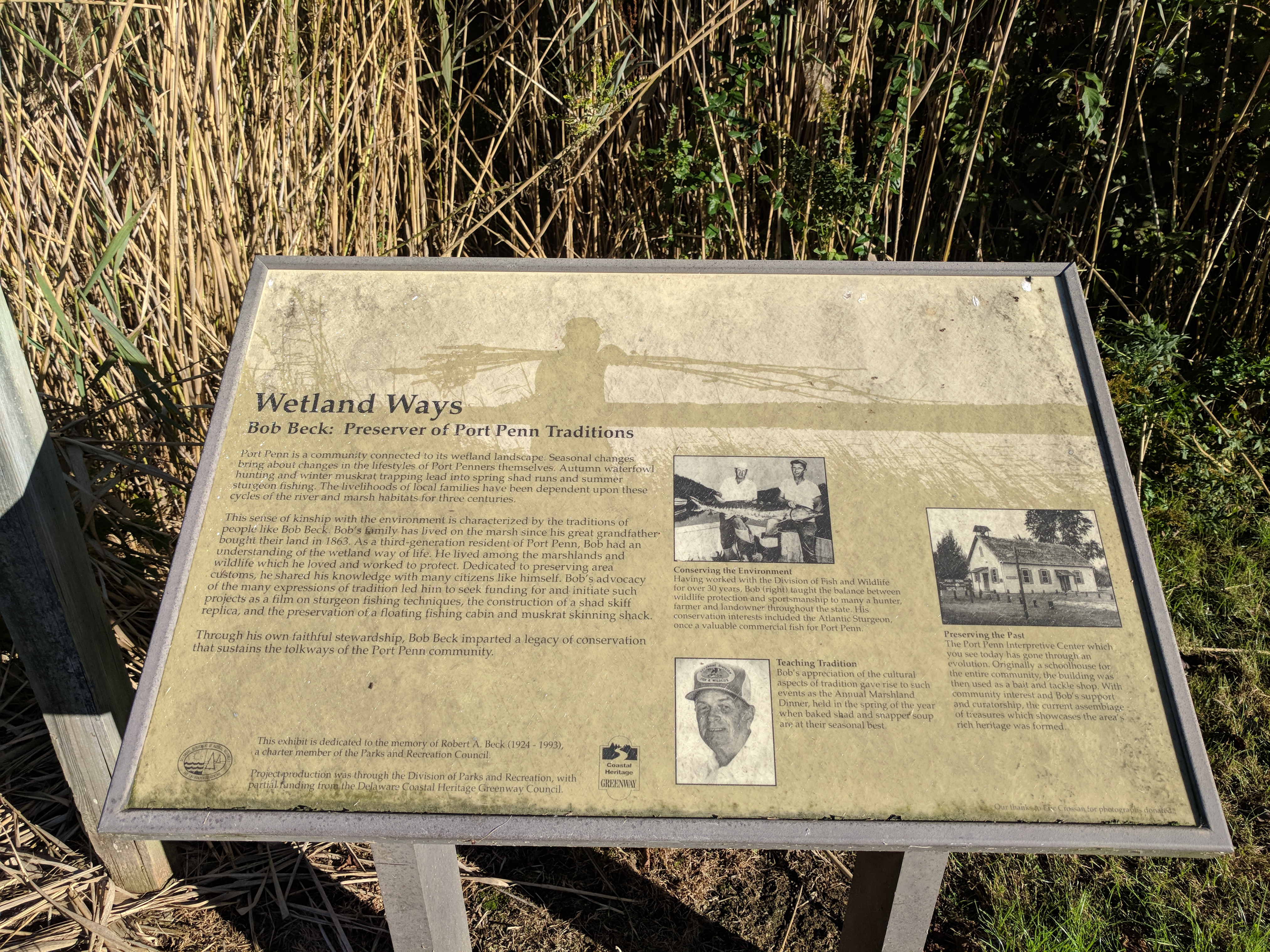
The products of this remarkable material culture include objects like the gill net and floats, as well as examples of local architecture of buildings such as muskrat skinning huts and floating cabins. These objects remain thanks to Bob Beck, who accessioned, preserved, and even donated some of them to larger institutions. Although I can't pinpoint the objects' original owners, the historic import instilled in the net and floats are the result of his interest and stewardship; they gained the value that they have today when they passed through his hands. These items are relics of a largely disappeared culture. As a part of the history of the maritime culture of the Delaware River and Delaware Bay, they symbolize an overarching theme of the interconnectedness of nature, society, and industry, as well as the eventual ephemerality of what was at one time supremely tangible.

Bibliography
Cobb, John N. "The Sturgeon Fishery of the Delaware River and Bay," Report of the Commissioner of Fish and Fisheries for 1899. Washington: Government Printing Office, 1900.
Eilperin, Juliet. "Atlantic Sturgeon Listed as Endangered Species," The Washington Post, Health and Science Blog. February 1, 2012. https://www.washingtonpost.com/national/health-science/atlantic-sturgeon-listed-as-endangered-species/2012/02/01/gIQARbAmiQ_story.html?utm_term=.b838ca1f5def
Fisher, Caroline C. Marshland Resources in the Delaware Estuary, 1830 to 1950+/-: An Historic Context. Newark, DE: University of Delaware, 1993.
Herman, Bernard, and Dean Nelson. "National Register of Historic Places Inventory - Nomination Form: Port Penn Historic District," 1978.
Roberts, A.W. "The Sturgeon," Scientific American 43:7 (August 14, 1880). 103.